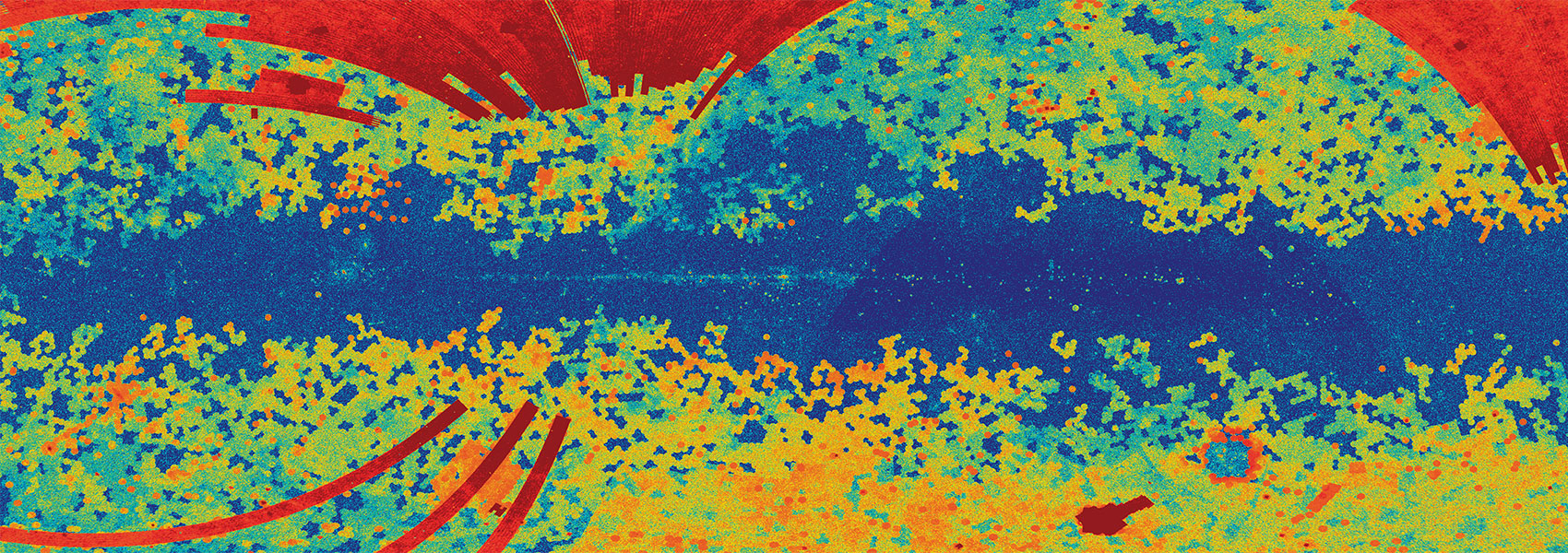November
2020
•
2020ApJ...903...24M
Authors
•
Mukae, Shiro
•
Ouchi, Masami
•
Hill, Gary J.
•
Gebhardt, Karl
•
Cooper, Erin Mentuch
•
Jeong, Donghui
•
Saito, Shun
•
Fabricius, Maximilian
•
Gawiser, Eric
•
Ciardullo, Robin
•
Farrow, Daniel
•
Davis, Dustin
•
Zeimann, Greg
•
Finkelstein, Steven L.
•
Gronwall, Caryl
•
Liu, Chenxu
•
Zhang, Yechi
•
Byrohl, Chris
•
Ono, Yoshiaki
•
Schneider, Donald P.
•
Jarvis, Matt J.
•
Casey, Caitlin M.
•
Mawatari, Ken
Abstract
•
We present cosmological (30-400 Mpc) distributions of neutral hydrogen (H I) in the intergalactic medium (IGM) traced by Lyα emitters (LAEs) and QSOs at z = 2.1-2.5, selected with the data of the ongoing Hobby-Eberly Telescope Dark Energy Experiment (HETDEX) and the eBOSS survey. Motivated by a previous study of Mukae et al., we investigate spatial correlations of LAEs and QSOs with H I tomography maps reconstructed from H I Lyα forest absorption in the spectra of background galaxies and QSOs obtained by the CLAMATO survey and this study, respectively. In the cosmological volume far from QSOs, we find that LAEs reside in regions of strong H I absorption, i.e., H I rich, which is consistent with results of previous galaxy-background QSO pair studies. Moreover, there is an anisotropy in the H I distribution plot of transverse and line-of-sight distances; on average the H I absorption peak is blueshifted by ∼200 km s-1 from the LAE Lyα redshift, reproducing the known average velocity offset between the Lyα emission redshift and the galaxy systemic redshift. We have identified a ∼40 Mpc scale volume of H I underdensity that is a candidate for a giant H II bubble, where six QSOs and an LAE overdensity exist at $\left\langle z\right\rangle =2.16$ . The coincidence of the QSO and LAE overdensities with the H I underdensity indicates that the ionizing photon radiation of the QSOs has created a highly ionized volume of multiple proximity zones in a matter overdensity. Our results suggest an evolutionary picture where H I gas in an overdensity of galaxies becomes highly photoionized when QSOs emerge in the galaxies.
Links



